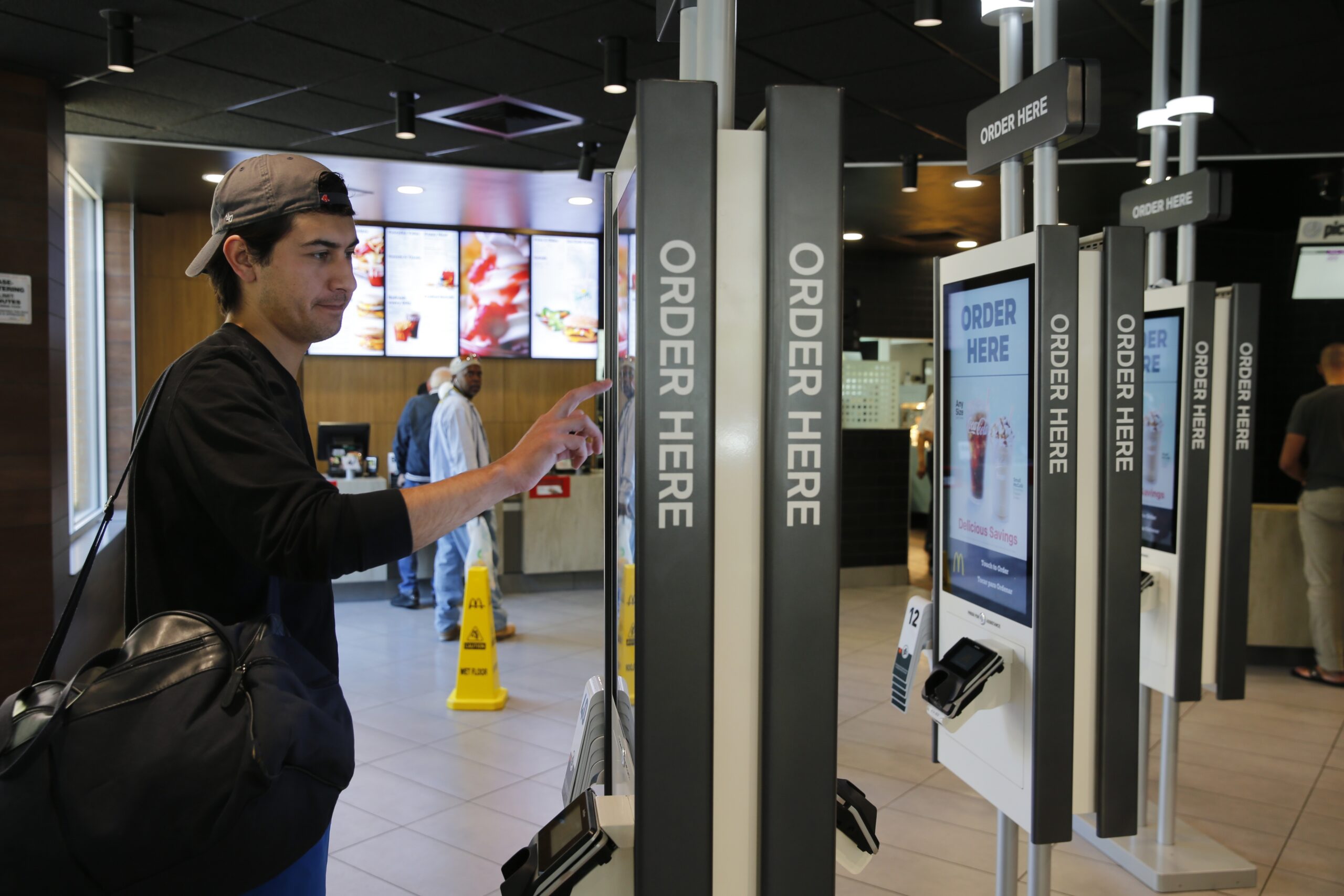From grocery stores to the library, many of us are accustom to using self-checkouts. How does this limited person-to-person contact affect what we choose to buy? We talk to a consumer behavior expert to learn more. We also talk about the changing landscape of right-wing media and we take a look at the mission readiness of Wisconsin’s National Guard troops.
Featured in this Show
-
Love Them Or Hate Them, Self-Checkouts Are Here To Stay
Self-checkouts are a common sight in stores by now, and love them or hate them, they’re here to stay.
While their growth wasn’t as rapid as many industry insiders expected — and they haven’t replaced cashiers completely, as some thought — there is a clear and upward trend, said Vallari Chandna, a consumer behavior expert at the University of Wisconsin-Green Bay.
“You’re seeing them in more and more businesses that you wouldn’t expect it at,” she said. “Unless there is some major change or switch … I do not see this trend going down.”
The number of self-checkouts is constantly fluctuating. In 2013, there were 191,000 worldwide, the most recent estimates have predicted there will be 468,000 by 2021.
Critics of the machines often cite encouraging even less human interaction in an already screen-driven society and job losses in the industry.
But Clint Woodman, president of Woodman’s Market, says his stores have the same number of employees as they did when they first implemented self-checkout machines in the late 1990s.
“They’re not taking jobs,” he said. “We still have the same number of employees as when we started using them, they’re just doing different things.”
Different things like monitoring the self-checkouts or bagging — research suggests that the risk for stealing is higher at self-checkout machines.
“I think if we throw too much temptation in the way of people … like if I took one item, who cares? Or it’s this huge conglomerate or a faceless entity I’m stealing from because you’re not interacting with a human person,” Chandna said.
Woodman acknowledges there are labor cost savings to using the machines, but it doesn’t equal out to much.
“You’re not saving much in the long run,” he said. “The machines cost about four times as much as a regular lane.”
Then there are the ongoing costs, from software updates to breakdowns and maintenance.
The business reasons behind using self-checkouts have more to do with customer experience and efficiency than anything else, Woodman said.
At the Woodman’s in Janesville, about 25 percent of sales go through self-checkout, but in other stores around the state those numbers jump to upwards of 40 and 50 percent, he said.
Businesses are under pressure to compete with online retailers that have maximized on speed and convenience, Chandna said, and self-checkouts are part of their response to that.
“Everyone is used to looking at their screens and ordering,” she said. “People love the convenience … so they’re trying to just stay in the game.”
Companies like McDonald’s have also said customers who use self-checkout machines buy more than they do through a cashier, at least in part because the machines can also be programed to upsell.
“As a cashier I may not feel comfortable, or forget to say, do you also want X, Y and Z item to go with that, but the machine will remember,” Chandna said. “They’re throwing the temptation towards your way very frequently.”
They’re also throwing more work at the customer, she said, particularly in the airline and grocery industries.
“You have to go there, you have to check yourself and you still have to go drop off the bags,” Chandna said. “They’re saving a lot of money, but … for the customer in airlines and groceries, it’s a lot of work.”
We’re also building a society that doesn’t require interacting with others very often, she said.
“You literally don’t have to interact with anyone, which becomes pretty fascinating as a phenomenon,” Chandna said. “You don’t need to like the phenomenon of course but it’s just interesting that this can happen.”
-
Analysis: More Wisconsin National Guard Troops Are Not Meeting Readiness Goals
According to a new analysis from the USA Today Network-Wisconsin, National Guard units from the state are more frequently failing readiness goals compared to Illinois and Iowa. Investigative reporter Keegan Kyle joins Central Time to talk about his report and what it might mean for National Guard members in the state.
-
What We Buy When No One's Watching
By now, self-checkouts at the grocery store are a normalized feature and you may have even ordered your meal at McDonald’s on a large touch screen. How has this minimized person-to-person interaction influenced what we purchase? With no one to judge, do we buy a little bit more junk food than usual? Or maybe avoid anything that you find difficult to scan? We talk to a consumer behavior expert for more.
-
Does The Weekly Standard Still Have A Place In Conservative Media?
The owner of The Weekly Standard recently announced that it’s expanding its sister publication, The Washington Examiner, leaving the conservative magazine’s future uncertain. Contributing editor and former Milwaukee talk radio host Charlie Sykes discusses The Weekly Standard’s place – along with the “Never Trump” voice – in right-wing media.
Episode Credits
- Rob Ferrett Host
- Derrell Connor Host
- Natalie Guyette Producer
- J. Carlisle Larsen Producer
- Bill Martens Producer
- Vallari Chandna Guest
- Keegan Kyle Guest
- Charlie Sykes Guest
Wisconsin Public Radio, © Copyright 2025, Board of Regents of the University of Wisconsin System and Wisconsin Educational Communications Board.

